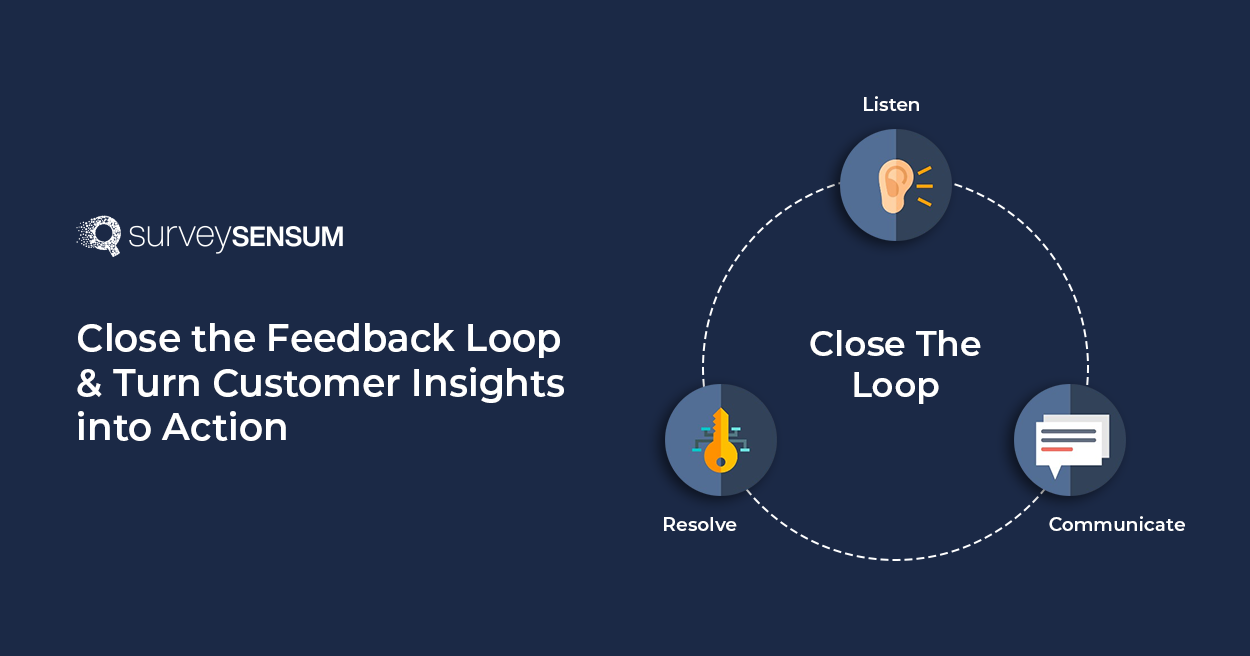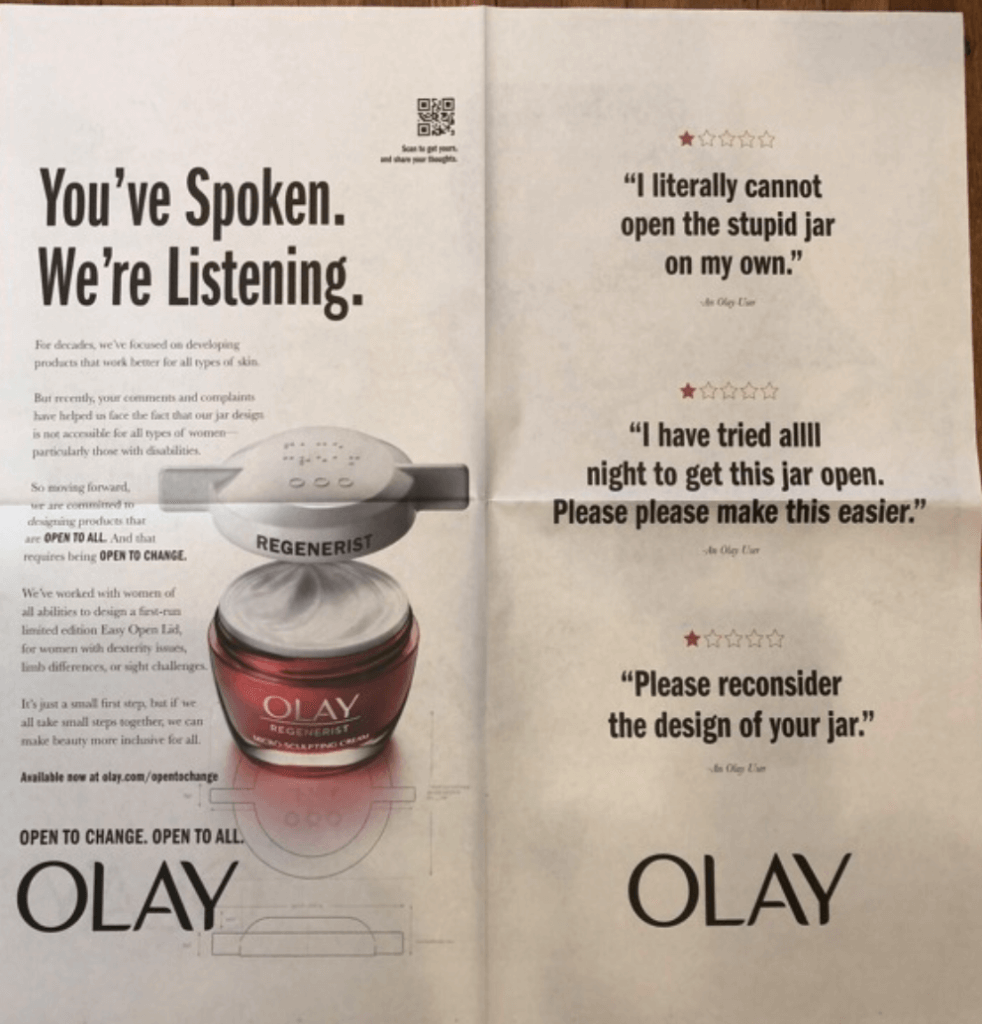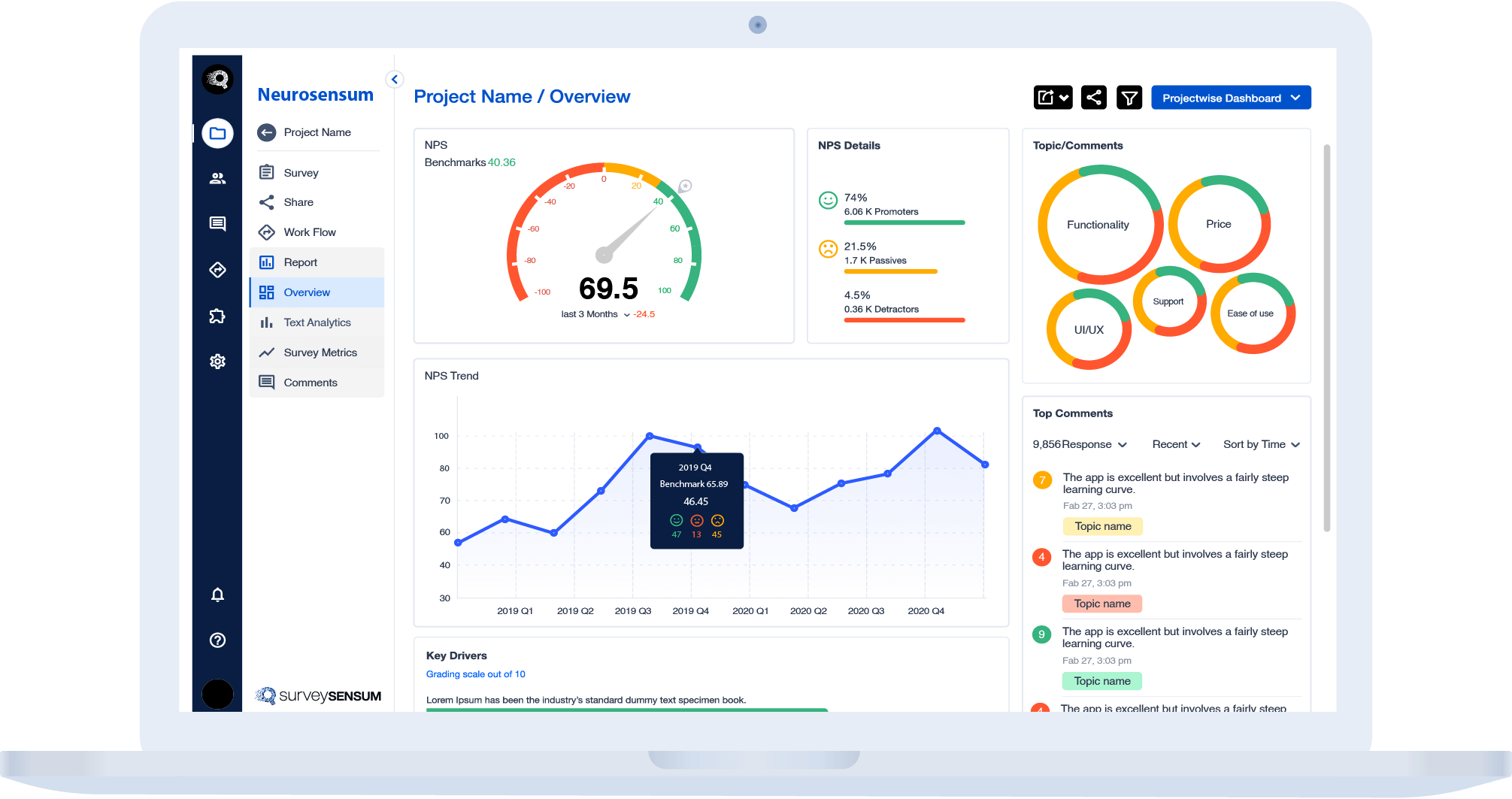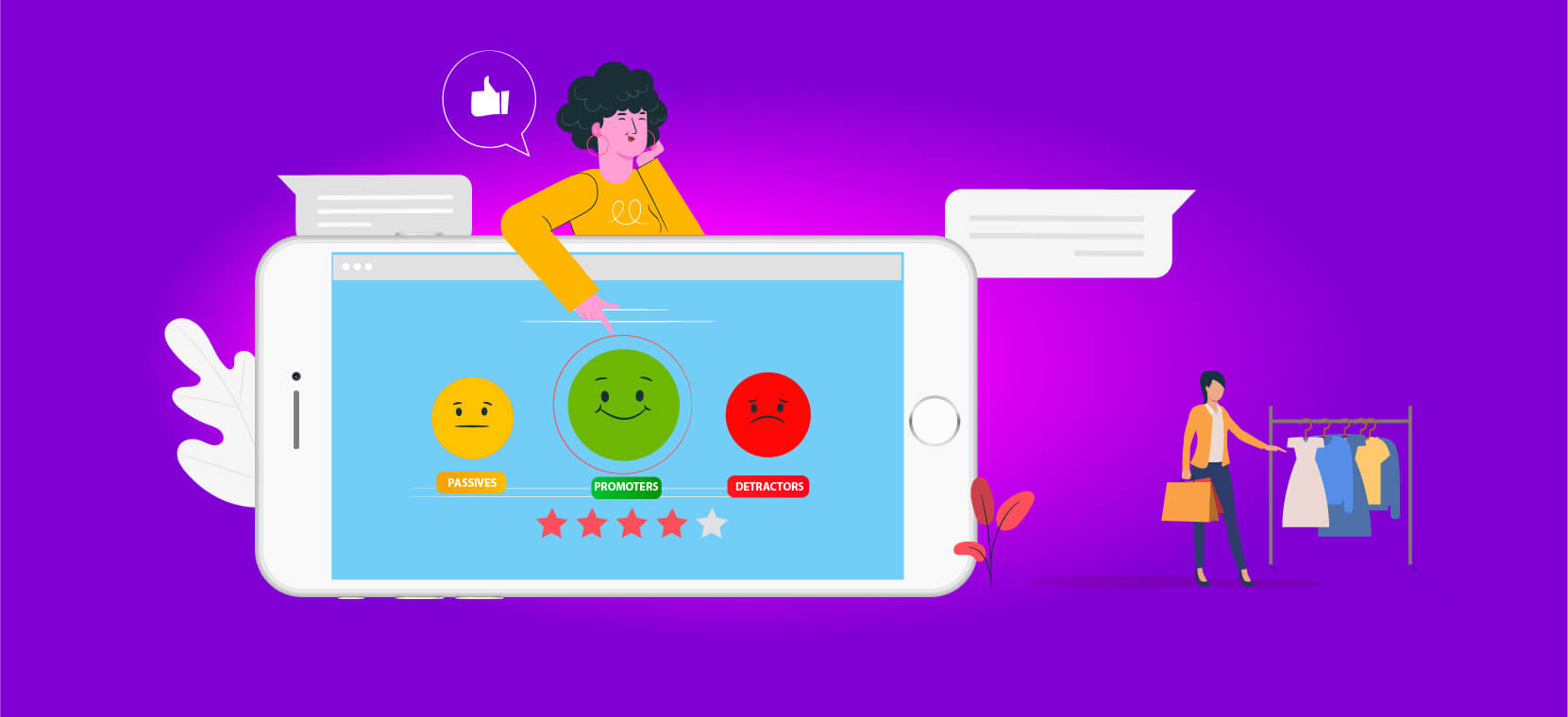
I recently bought a very expensive pair of Colorblind Glasses. But they didn’t work! I requested a refund but the app somehow created a replacement request.
The glasses were picked up. But I didn’t receive any replacement or the money!
I reached out to customer care which I heard was very good. They asked me to wait for a week. After a week, they referred me to some other department. And a week after that, they said the refund was processed, but it was the bank’s fault!
I received the money after one call to the bank. But, I am NEVER going to buy from them again.
This is what is wrong with most companies and I am sure this must have happened to you as well!
They
- Either don’t really want to take the feedback.
- Or don’t do anything with the feedback.
That’s where closed-loop feedback comes in!
What is a Closed Feedback Loop?
A Closed Feedback Loop is a process where customer feedback is collected, analyzed, and acted upon, followed by communicating back to the customer about the actions taken. It ensures that feedback isn’t just gathered but used to improve customer experience and build stronger relationships.

But, What Does Closing the Loop Really Mean?
Closing the loop means taking customer feedback beyond just collecting and analyzing it – it’s about taking action and following up with customers to show that their feedback has led to real changes.
Think of it like this:
- A customer shares feedback (positive or negative).
- Your team listens, analyzes, and takes action.
- You go back to the customer and let them know what you did based on their input.
This simple yet powerful process builds trust, improves customer experience, and enhances loyalty because customers feel heard and valued. In fact, The 2022 CustomerGauge Research showed that companies that followed up after an NPS survey tripled the number of promoters in their next survey, compared to those that did not close the loop.
And, How Does It Differ from Open Loop Feedback?
At its core, the difference between Closed Loop Feedback and Open Loop Feedback lies in how businesses handle customer input after it has been collected. While both methods involve gathering feedback, Closed Loop Feedback goes a step further by ensuring that the customer is acknowledged and informed about how their feedback has been used to drive improvements.
On the other hand, Open Loop Feedback is a more passive approach where businesses collect feedback but do not necessarily act on it in a structured manner, nor do they directly follow up with customers. For example, a company conducts an NPS survey to gauge customer satisfaction but takes no immediate action to address concerns raised by detractors.
Now, let’s understand why closed loop feedback is important and how to do it.
But Why Is Closed Loop Feedback Important?
Collecting customer feedback is just the first step – what truly makes a difference is what you do with it. Closing the feedback loop is essential because it transforms customer input into meaningful action, driving better experiences, stronger relationships, and higher retention. Here’s why it matters:
- It shows your customers that they are being listened to. And when they feel valued, your retention rate goes up! In fact, studies show that 68% of customers leave if they feel unappreciated.
- It allows you to improve your services and products, boosting customer loyalty. And brands that actively engage in customer feedback and act on it see a 25%–95% increase in profitability due to improved customer retention.
- It helps you identify the gaps or improvements in your product, service, or CX program.
- It eventually improves your response rate when the customers feel that their feedback is taken into consideration. Studies show that 77% of consumers say they have a more favorable view of companies that ask for and accept customer feedback.
Now that you know why we should do it, let’s discuss the how.
Step-by-Step Guide to Implementing a Closed Loop Feedback Process
A well-structured closed-loop feedback system helps businesses not only collect customer insights but also act on them effectively. It ensures that every piece of feedback is addressed, leading to improved customer satisfaction and loyalty. Here’s how you can set up a powerful closed-loop process:
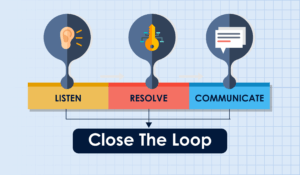
1. Understand the Customer Journey
To capture meaningful feedback, you need to know where, when, and how customers interact with your business.
- Launch journey-based surveys at critical touchpoints – onboarding, product usage, customer support, and post-purchase – to collect feedback at key moments.
- Unify feedback data on a single platform to eliminate silos and gain a 360-degree view of customer sentiment.
- Make data accessible to all relevant teams – product, marketing, customer success, and support – so they can act on insights efficiently.

With SurveySensum’s unified dashboard, you can collect, analyze, and act on customer feedback from all channels, across multiple touchpoints in the customer journey, in one consolidated platform.
From onboarding to retention, get the full picture by implementing journey-based surveys, identifying pain points across the customer journey, and centralize feedback from all channels into one platform for smarter decision-making!
2. Capture Customer Feedback Effectively
Customers interact with your brand across multiple channels. A strong omnichannel feedback system ensures no voice goes unheard.
- Collect feedback from multiple touchpoints – email, website, mobile apps, call centers, social media, and live chat.
- Use an omnichannel feedback management system to centralize and analyze all responses in one place.
- Leverage AI-powered sentiment analysis to categorize feedback and prioritize critical issues from multiple channels.
With SurveySensum, you gain holistic, 360-degree VoC data, a real-time view of customer sentiment across multiple touchpoints – all in one unified dashboard. And with advanced text and sentiment analytics software, you can automatically categorize feedback, detect emotions, and highlight key themes.
3. Implement a Real-Time Ticketing System

Not all feedback requires immediate attention, but negative feedback should be addressed promptly. A real-time ticketing system helps resolve customer concerns before they escalate.
- SurveySensum’s AI-enabled ticketing system automatically flags and alerts your team about detractors.
- Escalate issues to the right teams. Instead of letting complaints sit idle, route them directly to the relevant department for swift resolution.
- Ensure that each issue is followed up on, preventing customers from churning due to unresolved complaints.
4. Prioritize Action with Key Driver Analysis

Not all feedback is equally urgent. Some issues impact customer satisfaction more than others.
- Use SurveySensum’s Key Driver Analysis to identify which pain points have the most impact on customer loyalty.
- Segment feedback by customer type – high-value customers, first-time users, and long-term subscribers might have different concerns – target your actions accordingly.
- Segment feedback by customer type (high-value customers, first-time users, etc.) for a targeted response.
5. Take Action & Improve Customer Experience
Insights are meaningless if they don’t lead to real improvements. Acting on feedback is the most crucial step.
- Share feedback with relevant teams – product, marketing, and customer success—to brainstorm and implement solutions.
- Execute necessary changes – whether it’s fixing a recurring issue, improving a feature, or refining a service process.
- Ensure the improvements are tracked to measure their impact on customer satisfaction.
6. Communicate with Customers About Actions Taken
Closing the loop isn’t just about fixing issues – it’s about letting customers know they’ve been heard.
- Follow up with customers to inform them of improvements based on their feedback.
- Use personalized emails, in-app messages, or direct calls to acknowledge their concerns and update them on solutions.
Let’s now talk about what are the different types of feedback loops and how to implement them.
Types of Feedback Loop Feedback
There are two types of closed-loop feedback.
- Internal/Inner Loop
- External/Outer Loop
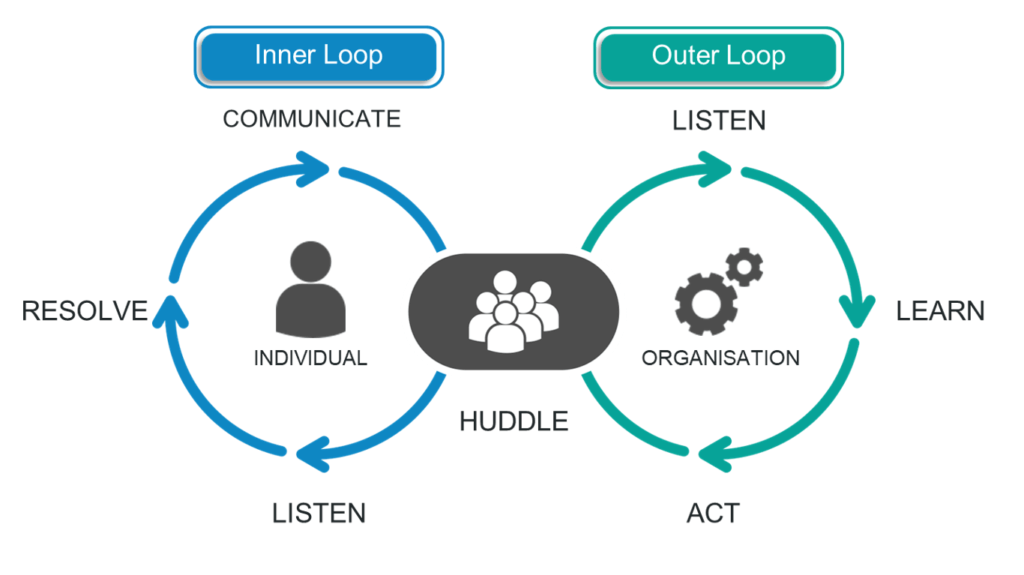
1. Internal Closed Feedback Loop
In the Internal/Inner Loop, after receiving negative feedback, the agent or their lead can provide immediate resolution of the particular customer issue.
Scenario:
A customer was trying to generate a refund request but failed. When the feedback form popped they shared their frustration.
After reading the feedback, the product manager instantly called the customer and listened to the issue patiently, generated the refund from their end, and apologized.
And they analyzed if other customers are facing the same issue and informed this glitch to the tech team.
This is called the Inner Customer Feedback Loop.
SurveySensum’s AI-enabled ticketing system automatically flags negative feedback and notifies the right team to take immediate action!
Why Internal Feedback is Crucial for Team
- It promotes individual employees’ and teams’ learning.
- It provides autonomy to every employee to make their decisions.
- It makes the employees feel they are closer to the customer and the company trusts them to make the right decision for the customers.
- It boosts customer engagement and morale.
- It results in a happier customer.
Best Practices for Internal Feedback Implementation
- Assign ownership to the department heads for whom the feedback is coming.
- Instantly share the feedback with Slack or email alerts (or use a feedback platform).
- Start with calling people the detractors (and set up an SLA like 48-72 hours for calling them.)
- Share positive feedback with every team member to get them motivated ( Everyone loves positive news)
- Record everything that has been said. Discuss it in a weekly or monthly meeting and prioritize it for resolutions.
Key Points to Remember!
- Instantly share the feedback with the team responsible.
- Coach employees regularly on how to close the inner loop.
- Define SLAs as 48-72 hours for calling a detractor.
- Appoint owners of touchpoints responsible for their team to make follow-up calls.
If the head of the department of touchpoint owners can’t take action on the customer issues then inform the customer about it. Be transparent.
Who Should Own the Internal Closed Feedback Loop?
- Service Team: If the feedback is about the service, agents themselves, or their manager.
- Product Team: If feedback is about the product, product managers/UX designers.
- CX Team: They are looped in on all kinds of customer issues.
- Senior Management: They know all kinds of customer issues and how we are responding to them.
It should be owned by the owner of that department/touchpoint and their teams.
That’s all about the Inner Customer Feedback Loop. But what happens when the agent can’t resolve the customer’s issues on their own?
That’s where the outer customer feedback loop comes in.
2. External Customer Feedback Loop
When customer issues require structural improvements, they are escalated to the concerned departments and need approvals from Department heads or even the C-suite. That’s the External/Outer Loop.
For example, if the refund process is taking too long, then it requires technical changes on the backend. That is resolved in the external Customer Feedback Loop.
While in the Internal Loop all the involved individuals receive the customer feedback and act on it instantly, the External Loop is different.
- It entertains complex issues that your agents/teams can’t resolve on their own.
- It includes issues that require system changes, policy updates, process improvements, pricing, product features, etc. in line with customer expectations.
- These kinds of issues often escalated across departments, involving senior management and huge investments.
Why is the External Customer Feedback Loop important?
- It prioritizes changes that employees and teams can’t make on their own.
- It gives voice to the employees. They communicate customer issues with the management. This drives a cultural change in the organization.
- The employees feel valued and more involved with their work, it feels like they have a purpose.
- The customers start believing that the organization is truly customer-centric.
Best Practices that make the External Customer Feedback Loop Successful
- Gather feedback from the following sources:
- All the customer data from surveys and the inner loop.
- Common customer complaints raised by the support team.
- Voice of front-line employees.
- Find common themes from all this feedback and share them across the departments responsible for taking action on it.
- Prioritize actions of improvement with the respective teams by answering the following questions:
- What will be the initiative’s impact on the customers and business?
- How much effort will be required to implement the initiative?
- Create action plans.
- Communicate with both the employees and customers.
For instance, Olay has been sharing personalized newsletters to customers who reported issues while opening its cap!
Key Points to Remember!
- It requires significant investment.
- It typically demands both detailed analysis and a decision to invest resources.
- It almost always cuts across functions.
- It identifies, prioritizes, allocates resources, and manages customer-friendly changes.
- It requires Project Managers to share reports about the progress of improvements with all the teams involved.
| Aspects | Internal (Inner) Loop | External (Outer) Loop |
| Definition | Focuses on addressing individual customer issues and improving their experience | Focuses on identifying recurring trends and making strategic business improvements |
| Purpose | Quick resolution of specific customer complaints or concerns | Long-term improvements based on patterns in feedback data |
| Scope | Individual customers and their immediate concerns | Organization-wide processes, policies, and product/service enhancements |
| Who is involved? | Customer support, product teams, frontline employees | Senior management, CX teams, product development, strategy teams |
| Example | A customer reports an issue with delayed delivery, and support resolves it quickly | Data shows frequent complaints about delivery delays, prompting a policy change for faster shipping |
Detect, track, and resolve customer complaints instantly with automated alerts and escalations. Ensure no detractor goes unnoticed with SurveySensum’s AI-enabled real-time ticketing system!
Moreover, one of the most asked questions is what is the difference between closing the loop in B2B and B2C. So, let’s dive into that!
Difference Between Closed-Loop Feedback in B2B and B2C
B2B relationships are often long-term and high-value, requiring a personalized approach, while B2C interactions are typically more transactional and require scalable feedback systems. Understanding these differences is key to optimizing your feedback strategy.
How B2B Companies Close the Feedback Loop?
In B2B, product managers to customer success professionals call customers to understand the issues they are facing.
They identify the bugs or feature requests for product improvement and add them to the product roadmap.
However, in B2C, reaching out to customers is a bit difficult due to the large volume of feedback.
So, here’s what you can do!
How to Close the Feedback Loop in B2C?
- Gather all the open-ended customer feedback from all channels.
- Identify the common problems with the most negative sentiment or low CSAT/NPS scores
- Call 5-10 customers who talked about those trending themes to understand the root cause of it.
- Generate ideas, prioritize, and create action plans with your team.
- Let your customers know that you’ve listened to them and you are going to take action on it.
A Guide to Closing the Customer Feedback Loop – Download Now!
Conclusion
A truly effective closed-loop feedback process isn’t just about collecting data – it’s about turning insights into meaningful action. By leveraging SurveySensum’s AI-powered ticketing, omnichannel feedback, and key driver analysis, you can prioritize issues, take action faster, and keep customers informed, leading to a better customer experience and stronger brand loyalty!







